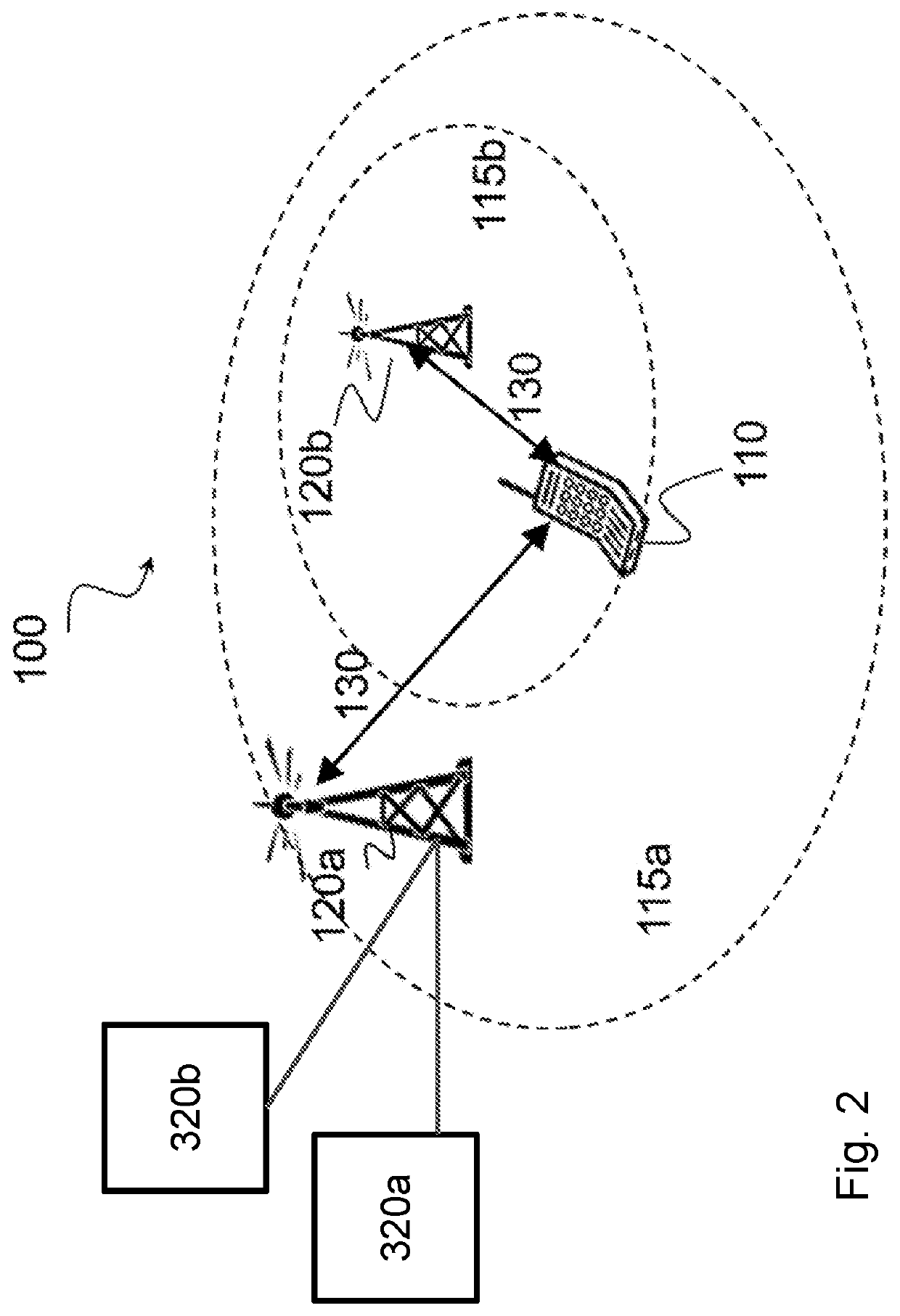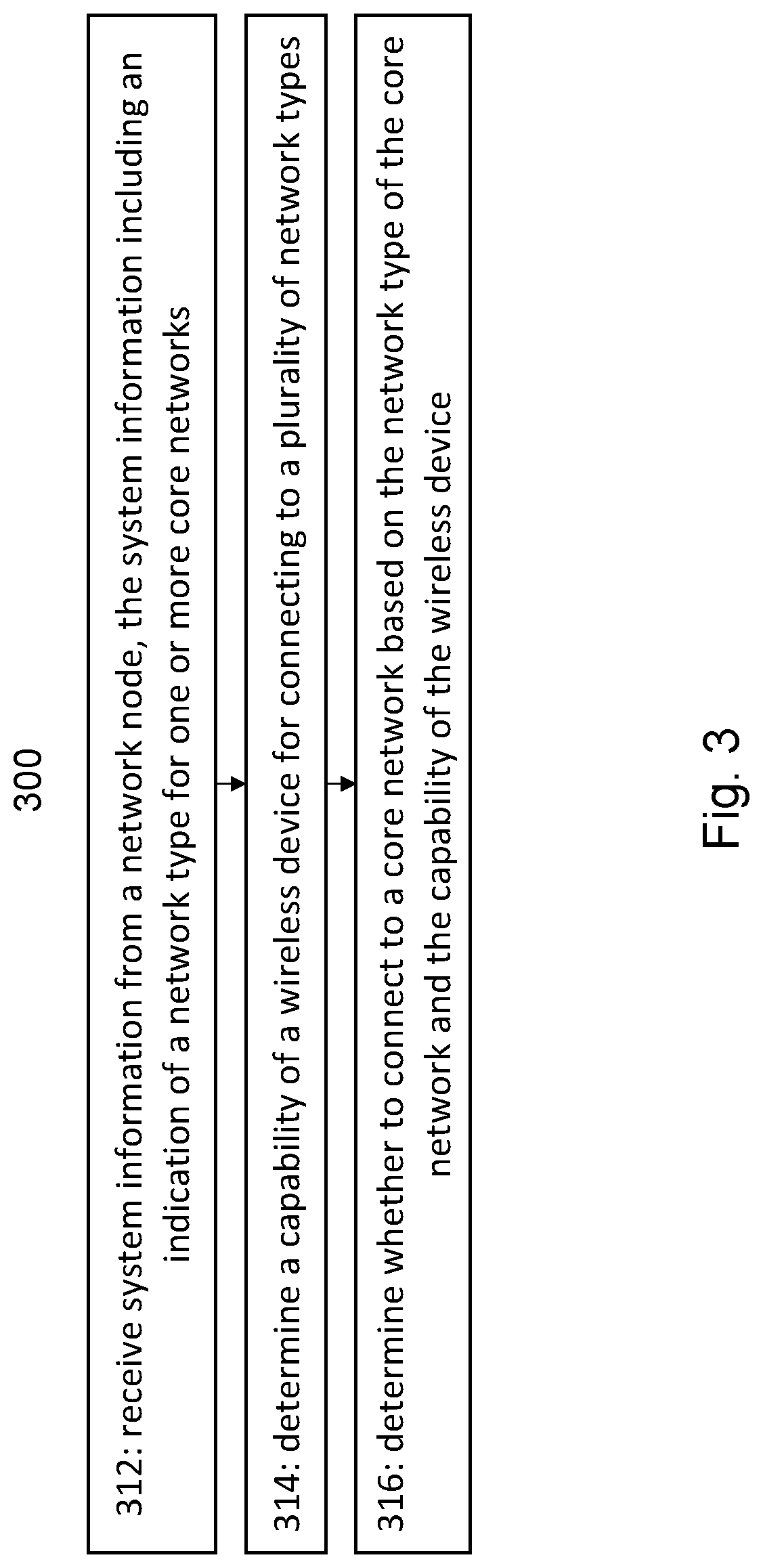Resolving system information between EPS and 5GS
a technology of system information and broadcasting, applied in the field of wireless communication, can solve problems such as inability to determine whether the selected plmn is supported, inability to design new and separate sis for ues connected to 5gc and served by 5gs, and inability to achieve correct determinations, so as to facilitate different operators sharing the same ran node
- Summary
- Abstract
- Description
- Claims
- Application Information
AI Technical Summary
Benefits of technology
Problems solved by technology
Method used
Image
Examples
Embodiment Construction
[0044]As described in the Introduction, Third Generation Partnership Project (3GPP) is currently specifying fifth generation (5G) new radio (NR) and a next generation packet core network (NG-CN, NGC, 5GC, or 5G-CN). Network deployments based on different 3GPP core networks (e.g., evolved packet core (EPC)-based and 5GC-based) and user equipment (UEs) with different capabilities (e.g., EPC-NAS and 5GC-NAS) may coexist at the same time within one public land mobile network (PLMN). A UE that is capable of supporting 5GC-NAS procedures may also be capable of supporting EPC-NAS procedures. Therefore, UEs that are capable only of EPC-NAS must be connected to EPC, while UEs that are capable of 5GC-NAS can be connected either to EPC or 5GC.
[0045]A long term evolution (LTE) eNB can belong to multiple PLMNs (e.g., for RAN network sharing). For each PLMN, the LTE eNB can be connected to: (1) EPC only, (2) 5GC only, or (3) both EPC and 5GC. This may be because different operators may introduce ...
PUM
 Login to View More
Login to View More Abstract
Description
Claims
Application Information
 Login to View More
Login to View More - R&D
- Intellectual Property
- Life Sciences
- Materials
- Tech Scout
- Unparalleled Data Quality
- Higher Quality Content
- 60% Fewer Hallucinations
Browse by: Latest US Patents, China's latest patents, Technical Efficacy Thesaurus, Application Domain, Technology Topic, Popular Technical Reports.
© 2025 PatSnap. All rights reserved.Legal|Privacy policy|Modern Slavery Act Transparency Statement|Sitemap|About US| Contact US: help@patsnap.com



